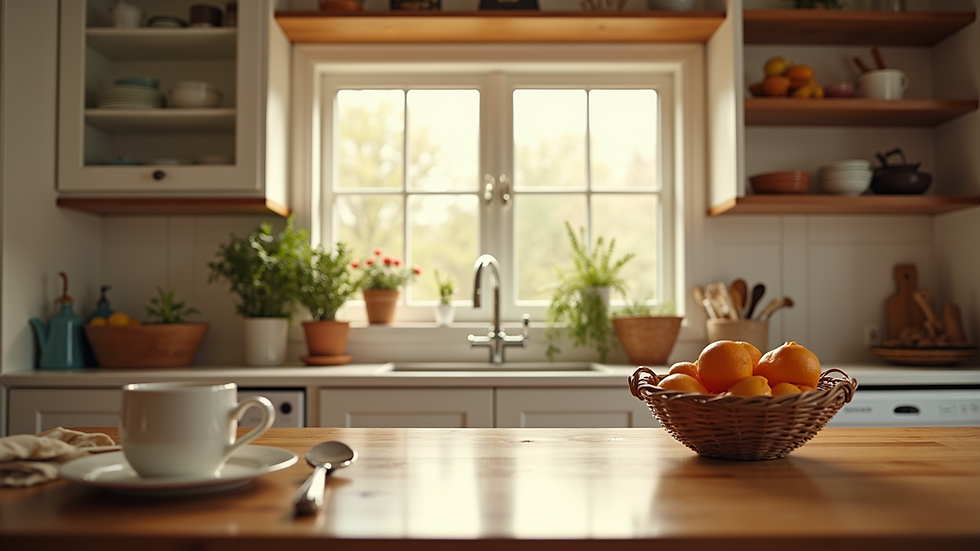Generational Design: Creating Homes That Grow with Your Family
- ACDesign
- 2 hours ago
- 4 min read
Designing a home is an exciting journey, much like crafting a story that evolves with each chapter of your family's life. Homes should adapt to the ever-changing needs of those who live in them. Whether you're welcoming children, caring for aging parents, or simply seeking a versatile setup, a thoughtful approach to home design can meet everyone’s needs. This guide offers practical tips and insights on creating homes that grow alongside your family through different life stages.
Understanding Generational Design
Generational design is about making spaces that serve all ages and abilities. Imagine a home that welcomes toddlers, teenagers, and seniors alike, providing comfort and safety for everyone. By following universal design principles, you can create an environment that enhances usability across physical capabilities.
For example, wide doorways, single-level living areas, and open floor plans can ensure that everyone moves easily and safely throughout the house. Studies show that homes built with these principles can see a 30% increase in their appeal for potential buyers seeking multi-generational options.
Benefits of Flexible Home Design
A flexible home design enhances both usability and longevity. Think ahead: the nursery you create today can transform into a home office tomorrow. For instance, a playroom could double as a guest suite with a simple change in furniture layout.
This adaptability boosts your property's resale value. A home that can easily shift between functions is a hot item in the market. Research indicates that 70% of buyers prefer homes that support a flexible lifestyle, allowing them to envision their future in the space.
Plan for All Age Groups
When designing, consider everyone who lives in or visits your home. Addressing various age needs can make the space more inviting and functional for all.
For toddlers, use soft, durable flooring and select rounded furniture to prevent injuries.
For teenagers, include cozy study areas equipped with good lighting and charging stations for their devices.
For older family members, create accessible common spaces with minimal stairs and wider doorways to accommodate mobility aids.
Designing with multiple age groups in mind fosters a more inclusive atmosphere, increasing comfort for all family members.
Incorporating Aging in Place Design
If you plan for aging family members or envision living in the home as you get older, consider the principles of aging in place design. This approach helps older adults maintain independence and comfort. Implement strategies like:
Single-level living: If possible, a layout without stairs eliminates barriers and promotes safety.
Grab bars and railings: Install these in critical areas like bathrooms and hallways to ensure stability.
Accessible bathrooms: Curbless showers and adequate lighting are key designs to reduce the risk of slips and falls.
By incorporating these elements, you can future-proof your home while keeping it stylish.

Outdoor and Communal Spaces
Outdoor areas can be incredibly versatile in a multi-generational home. A well-planned yard can serve as a playground for kids and a relaxation area for adults. Consider these features for your outdoor spaces:
Comfortable seating: Ergonomic chairs and benches offer usability for family gatherings.
Gardening spaces: Create raised garden beds that allow everyone—from kids learning to plant flowers to grandparents nurturing herbs—to engage with nature.
Accessible paths: Smooth, wide pathways help everyone navigate the yard easily, making outdoor activities enjoyable for all ages.
Effective outdoor designs invite families to connect with each other, encourage outdoor play, and appreciate the beauty of nature together.
Creating Open Spaces for Interaction
Modern families love open spaces that encourage interaction. Consider an open floor plan to eliminate barriers while maintaining distinct areas. Here are some tips for achieving this balance:
Zoning areas: Use rugs or furniture to define spaces without sacrificing the feeling of openness.
Multi-functional furniture: Opt for pieces, like storage ottomans, that offer versatility and can be rearranged easily.
With thoughtful design choices, you can create an inviting space that promotes togetherness and shared family experiences, no matter the ages involved.
Don’t Forget the Details
While the layout is crucial, it's the finer details that truly bring a space to life. Choose materials that are durable while still feeling welcoming.
Non-slip flooring: Essential in high-traffic areas, it enhances safety for everyone, especially in cooking and dining spaces.
User-friendly cabinetry: Lower cabinets ensure easy access for all family members, preventing the need for cumbersome stepping stools.
Incorporating colors and textures that appeal to different ages can also unify the design while keeping it adaptable for years to come.

Wrapping Up the Journey of Design
Designing a home that embraces every generation is more than a trend; it’s an essential need as families grow and change. By incorporating universal design principles, aiming for flexibility, and prioritizing accessibility, you can cultivate a supportive and harmonious environment that nurtures family connections across different life phases.
Your home is where cherished memories are created, and it should evolve as your family does. With these practical tips, you can craft a space that truly thrives alongside your family for years to come. Embrace the joy of designing with versatility, stay in tune with the needs of your loved ones, and watch your family’s story unfold in a home that celebrates each unique chapter.




Comments